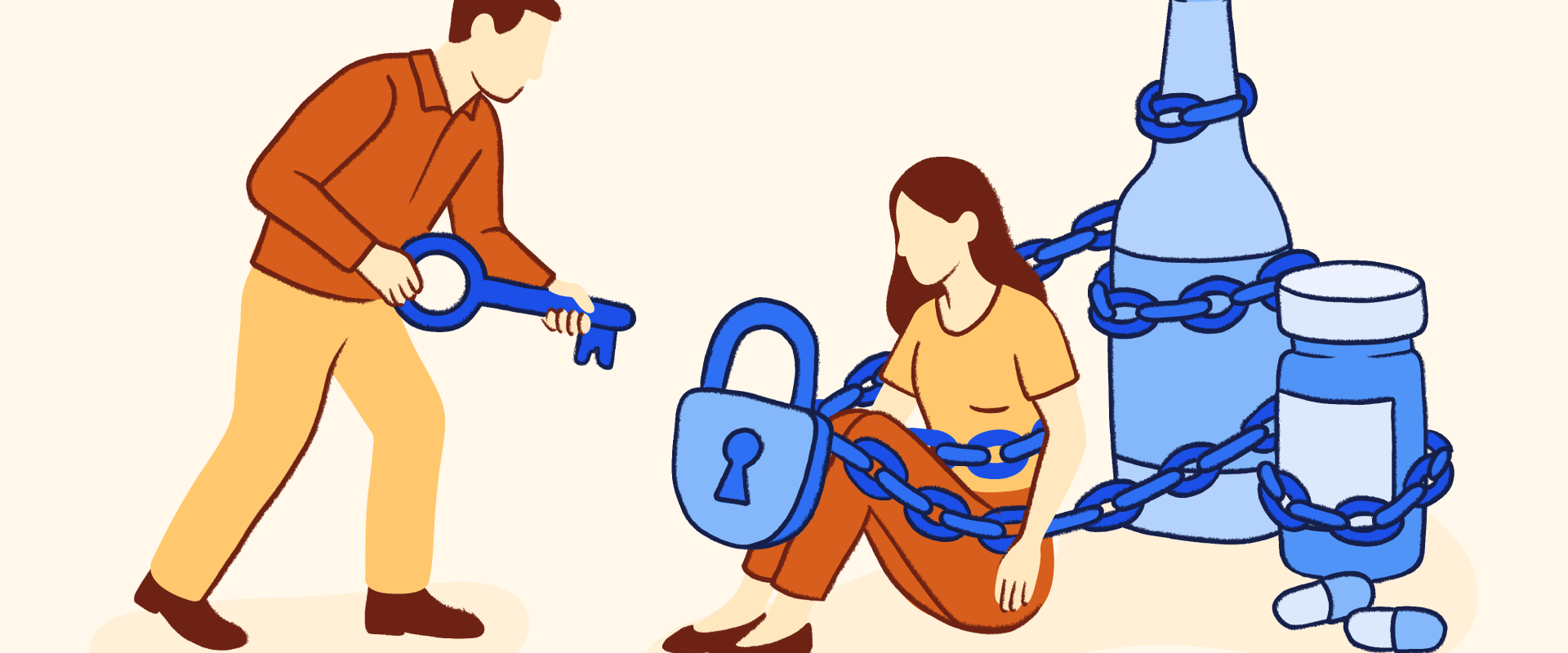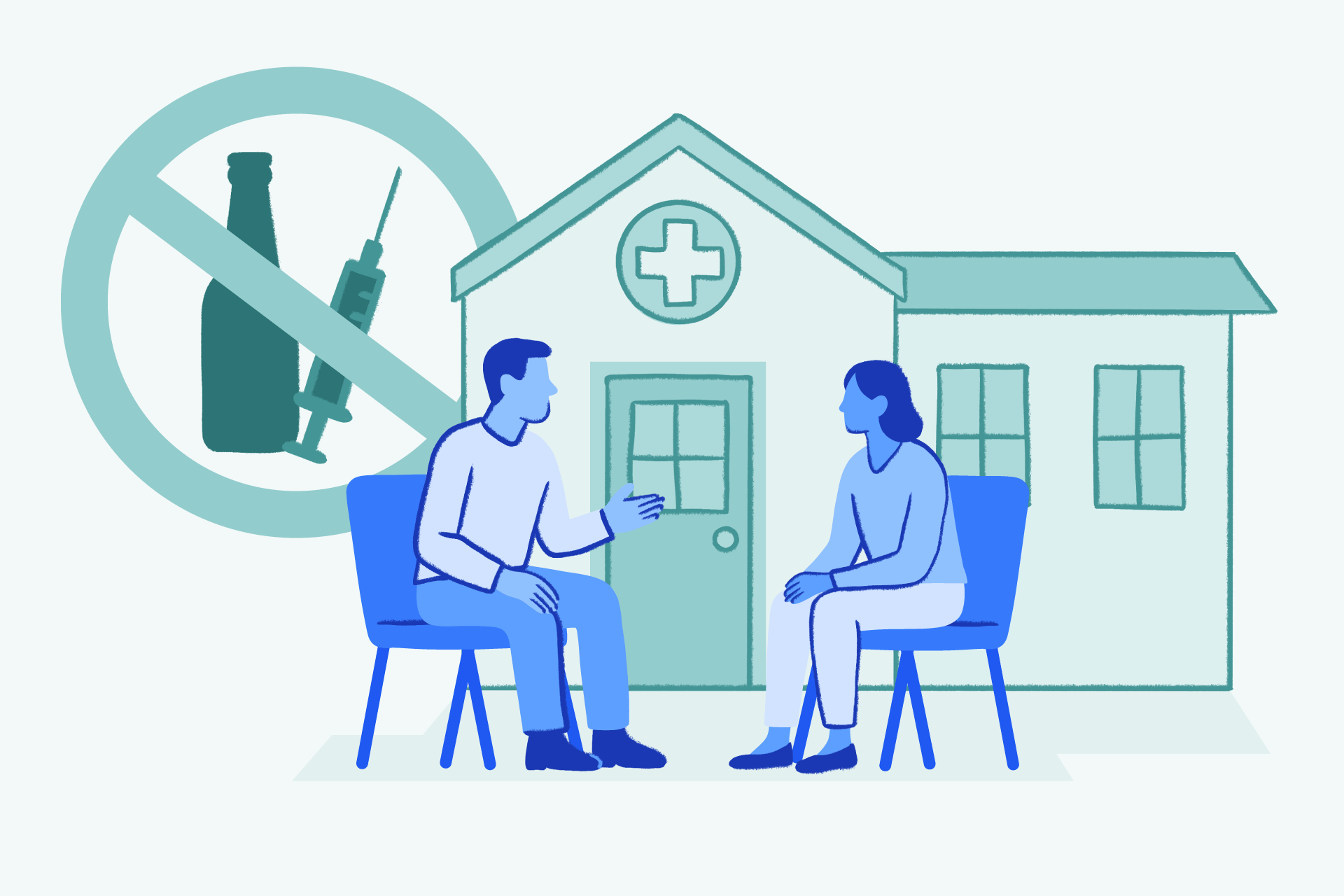Adventure Therapy: 7 Exciting Activities That Accelerate the Healing Process


Kayla holds over 6 years of experience in the rehab space, including in-house content management at a leading treatment center. She believes addiction and mental health issues are universal human experiences that can serve as important entry points onto a path toward self-realization and well-being.



Kayla holds over 6 years of experience in the rehab space, including in-house content management at a leading treatment center. She believes addiction and mental health issues are universal human experiences that can serve as important entry points onto a path toward self-realization and well-being.
Picture yourself standing at the base of a towering rock wall, heart racing as you look up at the challenge ahead. Your hands are chalky, your breathing is steady, and for the first time in months, your mind isn’t consumed by anxiety or depression. As you reach for that first handhold, you’re not just climbing a wall—you’re conquering fears that have held you back in every area of your life.
If you’re curious about how outdoor adventures can support mental health recovery, you’re in the right place. We’ll explore what adventure therapy really is, how it works, and why so many people are finding healing through these transformative experiences.
What Is Adventure Therapy?
Adventure therapy is a type of experiential therapy that uses outdoor activities and adventure-based experiences to promote healing and personal growth. Instead of sitting in a traditional therapy office, therapy takes place through adventure experiences that immerse you in nature, present challenges, and open up opportunities to get to know new sides of yourself. This can be anything from hiking mountain trails to learning new skills like rock climbing and kayaking.
The core principle is simple: When you push yourself outside your comfort zone (in a safe, supportive environment), you develop resilience and coping skills that transfer to other areas of your life. Mental health professionals guide these experiences, helping you process emotions and integrate breakthroughs prompted by the activities.
Healing by Doing
What makes adventure therapy different from regular outdoor recreation is the intentional therapeutic framework. Every activity is carefully designed with specific treatment goals in mind. This approach recognizes that healing doesn’t just happen through talking; it can also happen through doing.
Rewiring the Brain for Resilience
The science behind this is fascinating: Challenging experiences involving novel, purposeful movements and experiential learning drive what neuroscientists call activity-dependent neuroplasticity1—your brain literally forms and strengthens new neural connections in response to repeated stimulus and effort. This means that conquering a rock wall or completing a wilderness expedition doesn’t just feel transformative; it actually rewires your brain for self-efficacy and confidence.
Adventure-based therapy can work alongside traditional therapy methods or serve as a primary treatment approach.
How Does Adventure Therapy Work?
Therapeutic adventure engages you on multiple levels—physical, emotional, and mental—all at the same time. When you’re focused on navigating a hiking trail or using teamwork to complete a challenge, your usual thought patterns get interrupted. This creates space for new insights and perspectives to emerge.
Nature Immersion
The natural environment is key to this process. Spending time outdoors is proven to reduce stress hormones2 like cortisol and boosts mood-enhancing chemicals like serotonin and dopamine. When your nervous system is relaxed, you’re better able to process difficult emotions and experiences.
Emotional Processing
Adventure therapists are trained in facilitation3 and use processing techniques to help you make connections between your outdoor experiences and your life challenges. After completing an activity, you’ll discuss what came up for you—maybe you noticed how you handle frustration, or discovered you’re more capable than you thought. These conversations help you apply lessons learned outdoors to real-world situations.
Embodied Learning
The kinesthetic nature of adventure therapy is particularly powerful for people who struggle with traditional talk therapy. Some people find it easier to open up when they’re engaged in physical activity4 than they would in a therapist’s office. And the shared challenge of an outdoor adventure creates natural bonding opportunities with other participants.
Adventure therapists are trained in both therapeutic techniques and outdoor safety protocols. They should carefully assess your physical and emotional readiness for each activity to make sure the challenges are appropriate and supportive, not overwhelming.
Explore undefined Treatment Centers
Types of Adventure Therapy Activities
The use of adventure as therapy can involve a wide range of outdoor activities, each offering unique therapeutic benefits. The specific activities available depend on where your treatment program is located and your treatment goals, physical abilities, and comfort level with different challenges.
- Hiking and Wilderness Therapy
Wilderness therapy involves extended time in natural settings like forests, mountains, or deserts through activities like hiking and backpacking. Participants learn outdoor survival skills while processing personal challenges. This immersive approach helps you disconnect from daily stressors and develop self-reliance.
Discover how the healing power of nature can support mental health treatment in our article on ecotherapy for recovery.
- Rock Climbing and Ropes Courses
These activities provide clear, achievable goals while addressing fears and building trust. As you learn to rely on your teammates and safety equipment, you’ll develop confidence in your ability to take calculated risks and overcome obstacles.
- Water-Based Activities
Surfing, kayaking, and canoeing offer unique therapeutic benefits through their rhythmic, meditative qualities. Surf therapy has shown especially effective results for people with PTSD5 and depression, including military veterans.
Learn more about the science-backed healing benefits of surf therapy.
- Winter Sports
Skiing and snowboarding entail plenty of opportunities to face fears and build confidence in challenging conditions. The focus these activities require helps quiet anxious thoughts while building physical strength and coordination.
Dr. Ryan Drzewiecki, Director of Clinical Operations at All Points North Lodge in Vail Valley, Colorado says these sports offer more than just a way for clients to relax and have fun:
We have so many fantastic opportunities for activities outside of here, being in Colorado and being at the top of the mountain. We have canoeing and kayaking on the river, a lot of hikes, whitewater rafting, horseback riding, ATVing. We’ll take clients skiing, snowboarding, and snowshoeing in the winter. We have so many different options there, which we marry with an experiential philosophy of therapy. It’s empowering and it’s humbling at the same time, just to be here, to look out through these windows and see mountains for miles. It puts into perspective where you’re at and what you’re doing. It also helps people just to understand where they’re at.
- Wildlife and Nature Experiences
Safari experiences and wildlife observation programs help participants develop patience, mindfulness, and connection to the natural world.
Director and Co-Owner Giles Fourie explains how at White River Manor in South Africa, safaris are a main component of the therapeutic experience:
To have a safari as a part of your therapy process is very special. The company we use and the people who take our clients out really understand it from a therapeutic perspective. It’s not just about going to sit in a vehicle and view animals, it’s about really understanding our experience in nature and how we’re all a part of this world we live in.
- Equine Therapy
Working with horses develops emotional regulation and interpersonal skills. Horses provide immediate feedback about your emotional state, making them highly supportive partners in the healing process.
- Team-Building Activities
Team challenge courses use problem-solving activities that require group cooperation. These activities are great for developing social skills and learning healthy ways to handle conflict.
Benefits of Adventure Therapy for People in Recovery
Adventure therapy offers a unique combination of mental, physical, and social benefits that work together to support your treatment progress. Research consistently shows that this approach has significant benefits for people with conditions like depression,6 anxiety, trauma, and addiction.
- Mental well-being: Physical activity and achievement-based challenges in natural settings naturally boost mood and reduce symptoms of anxiety and depression.
- Physical health: Regular outdoor activity helps regulate sleep patterns, reduces chronic pain, and strengthens your immune system while improving overall fitness.
- Self-esteem and confidence building: Each challenge you overcome becomes evidence that you’re capable of handling difficult situations, providing concrete proof of your strength and resilience.
- Social skills development: Group settings help you learn to communicate effectively under pressure, resolve conflicts constructively, and build healthy relationships.
- Problem-solving abilities: Outdoor challenges require creative thinking, adaptability, and persistence—skills that transfer directly to daily life situations.
- Healthy coping mechanisms: You learn to use physical activity, time in nature, and past achievements to manage difficult emotions instead of turning to unhealthy behaviors.
Adventure Therapy for Teens and Young Adults
This modality is often used in programs for teenagers and young adults because it aligns perfectly with their developmental needs and learning styles. During these pivotal years, young people are forming their identities, developing independence, and learning how to navigate complex social relationships—all areas where adventure therapy excels.
Teens’ brains are still developing, especially in the areas related to decision-making and emotional regulation. Adventure therapy is a safe space where they can practice making choices and experiencing natural consequences without serious real-world risks. When young people learn to make split-second decisions while rock climbing or navigating a wilderness trail, they’re building executive function skills that will serve them throughout life.
A Less Intimidating Path for Reluctant Teens
Research shows that adventure therapy is effective for teens struggling with trauma, anxiety, depression, ADHD, substance abuse, committed parents, depression, oppositional defiant disorder, and other behavioral problems. The powerful combo of physical challenge, peer interaction, and achievement helps address multiple symptoms at once. A lot of young folks who resist traditional therapy find adventure therapy less threatening and more engaging.
While teens and young adults are a primary focus, adventure therapy benefits people of all age groups and backgrounds.
Finding the Right Adventure Therapy Program
If you’re searching for an adventure therapy program, consider your treatment goals and your comfort level with outdoor activities. Some programs focus on specific populations like teens or young adults, while others serve diverse groups.
Staff Qualifications
Look for programs led by experienced mental health professionals who specialize in outdoor safety and adventure programming. Reputable programs will have staff certified by organizations like the Association for Experiential Education (AEE) or similar professional bodies.
Learn how to assess whether a facility’s team has the right expertise in our guide to choosing a rehab center with qualified staff.
Safety
Safety protocols should be comprehensive and clearly outlined, and staff should be able to answer any questions you have in order to feel safe. Ask about staff-to-participant ratios, emergency procedures, and how they accommodate different physical abilities.
Pricing
Cost varies widely depending on program structure, amenities, and level of care. On average, a 30-day residential treatment program may cost between $15,000 and $25,000, though high-end or international programs can exceed this range. Pricing often reflects not just lodging and outdoor activities but also clinical services, staffing ratios, and safety protocols.
Some insurance plans cover adventure therapy when it’s provided by licensed clinicians, so check with your provider about reimbursement options.
Ready to Summit Your Recovery Goals?
Adventure therapy offers an immersive, fun, and effective path to healing that combines nature’s therapeutic benefits with evidence-based therapy practice. If this approach sounds right for you or your loved one, look for treatment centers offering adventure therapy to find quality programs near you.
FAQs
Q: Is adventure therapy real?
A: Yes, adventure therapy is a recognized and evidence-based form of treatment. It’s practiced by licensed mental health professionals and has been studied extensively in research settings, showing positive outcomes for various mental illnesses.
Q: What is the job description of an adventure therapist?
A: Adventure therapists are licensed mental health professionals who have additional training in outdoor programming and safety. They design and lead therapeutic activities, facilitate group processing sessions, ensure participant safety, and integrate outdoor experiences with conventional therapy techniques.
Q: Are wilderness therapy and adventure learning interventions cost-effective?
A: Adventure therapy can be a very cost-effective7 treatment, especially for adolescents and young adults. While initial costs may be higher than traditional therapy, many participants require fewer total treatment sessions and experience lasting improvements that reduce long-term healthcare costs.
Q: Do wilderness therapy programs offer psychotherapy and counseling?
A: Yes, reputable wilderness therapy programs include individual and group counseling as core components. Licensed therapists provide traditional psychotherapy alongside adventure activities as part of a comprehensive treatment approach that addresses both immediate mental health and addiction symptoms as well as underlying issues.
-
Robinson, T. (2024, September 1). Why travel broadens the mind and improves your capacity to learn. LAS. https://www.las-hq.com/blog-article-september-1-2024
-
Harper, N. J., Fernee, C. R., & Gabrielsen, L. E. (2021). Nature's Role in Outdoor Therapies: An Umbrella Review. International journal of environmental research and public health, 18(10), 5117. https://doi.org/10.3390/ijerph18105117
-
Newes, S., & Bandoroff, S. (2004, January). What is adventure therapy. In S. Bandoroff & S. Newes (Eds.), Coming of age: The evolving field of adventure therapy (pp. 1–30). Association for Experiential Education. https://www.researchgate.net/publication/229038183_What_is_adventure_therapy
-
Martinez, A. G., Gietzen, L., & McDaniel, V. F. (2024). Exploring the role of physical activity influencing emotional regulation and mental health in adolescents. Pacific Journal of Health, 7(1), Article 1. https://doi.org/10.56031/2576-215X.1046
-
Otis, N. P., Walter, K. H., Glassman, L. H., Ray, T. N., Michalewicz-Kragh, B., & Thomsen, C. J. (2020). Effects of PTSD and MDD comorbidity on psychological changes during surf therapy sessions for active duty service members. Journal of Military, Veteran and Family Health, 11(2). https://doi.org/10.3138/jmvfh-2019-0030
-
Russell, K. C., Hendee, J. C., & Phillips-Miller, D. (2000). How wilderness therapy works: An examination of the wilderness therapy process to treat adolescents with behavioral problems and addictions. In S. F. McCool, D. N. Cole, W. T. Borrie, & J. O’Loughlin (Comps.), Wilderness science in a time of change conference—Volume 3: Wilderness as a place for scientific inquiry (pp. 207–217). U.S. Department of Agriculture, Forest Service, Rocky Mountain Research Station.
-
Gass, M., Wilson, T., & Brennan, N. (2019). The value of outdoor behavioral healthcare for adolescent substance users with comorbid conditions. Substance Abuse: Research and Treatment, 13, 1–13. https://doi.org/10.1177/1178221819870768
Our Promise
How Is Recovery.com Different?
We believe everyone deserves access to accurate, unbiased information about mental health and recovery. That’s why we have a comprehensive set of treatment providers and don't charge for inclusion. Any center that meets our criteria can list for free. We do not and have never accepted fees for referring someone to a particular center. Providers who advertise with us must be verified by our Research Team and we clearly mark their status as advertisers.
Our goal is to help you choose the best path for your recovery. That begins with information you can trust.








